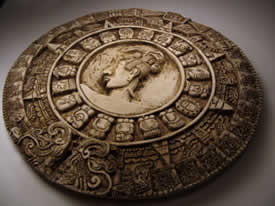TestimonialsHow to Meet Women 1I am an accountant and a banker and I devote almost all of my free time to raise my children. » read more | 6718 reads Making money 5Everyone is making fun of me when I talk about men and women staying virgins until they are married.
» read more | 4584 reads How to Meet Women 11At sexualhealingTV.com they warned me that a guy with my brains that is built like me can get into a lot of trouble with many women if I knew what to do with them. » read more | 4388 reads Making Money 3I speak Farsi, English and Russian fluently and a little bit of Persian.
» read more | 4406 reads Rekindling Romance 3The everyday routine and money problems make us forget about the important things in life. » read more | 3783 reads |
The Mayan Calendar The core of the Mayan calendar is based on one that was in common use throughout the Central American region, sharing aspects with calendars other Mesoamerican civilizations employed; they borrowed calendars from others, but their refinements and extensions made theirs the most sophisticated of the calendars in use. They are, along with the calendars of the Aztecs, the best documented and understood by modern people, and are still in use today in the Guatemalan highlands. The Mayan calendar does not correspond perfectly with our calendar of today; instead, it has a period of 260 days (the Tzolkin) in its most important form. This base calendar combined with a 365-day calendar (the Haab) in such a way that the two together formed a synchronized cycle that lasted for 52 Haabs. Both calendar systems were based on smaller cycles of 13 (trecena) and 20 (veintena) days. The Tzolkin was used to determine religious and ceremonial days, and was also used to build horoscopes for birth days and determine what an individual’s birth name would be. Just as in our zodiac system, the Maya used the Tzolkin and patterns within the Haab cycle to determine what one’s inner qualities were. Because the calendar did not divide perfectly into 13s, there were five nameless days at the end of the calendar, called the Wayeb; these were considered dangerous times when the barriers between the mortal and immortal world vanished, and ill-meaning spirits could menace humans. The Long Count was used to track long periods of time, and to determine when important days fell. This started at a given date, and was not attached to the solar year in any way. The Long Count is akin to Western systems of centuries and millennia, and it is what the Mayans believed the gods used to determine when to do specific things. There were several other calendars used to forecast events as well. But the Long Count is the important piece. It is divided into b’ak’tun, or periods. Using the Long Count, the arrival of Cortez was predicted, along with the destruction of the Aztec kingdom. There are also predictions attached to the Long Count that the year 2012 is the end of the world, the completion of the fourth creation of the gods and the beginning of the fifth and final world that will end mankind once and for all. Creations end on long counts of 13.0.0.0.0, and the next one will occur on December 21, 2012. What does this mean? No one really knows. There are always predictions that the end of the world is imminent, and even when several seem to run together, as this one does, that does not mean that the end is indeed nigh. However, that day can be considered a day of power, and you might expect something significant to happen around that day. » 3725 reads |
Live ChatUser loginMessage CenterNavigation
recent popular contentall-time popular content
|
